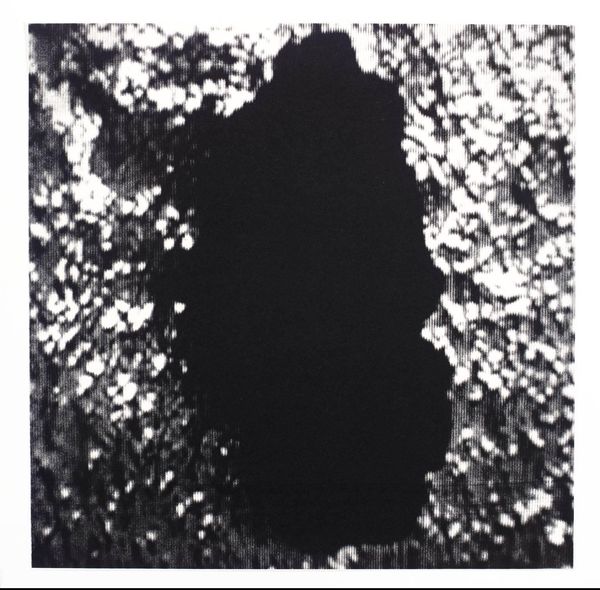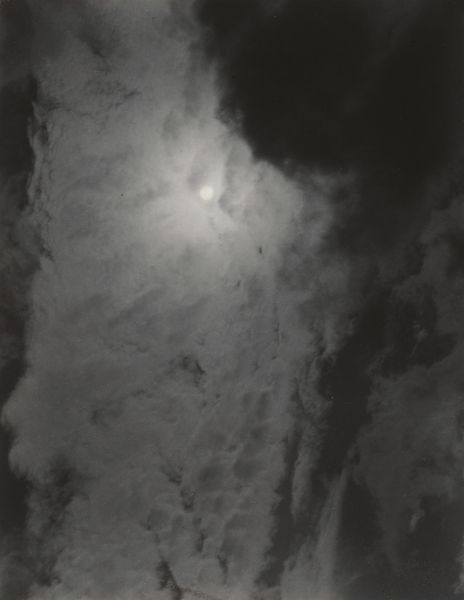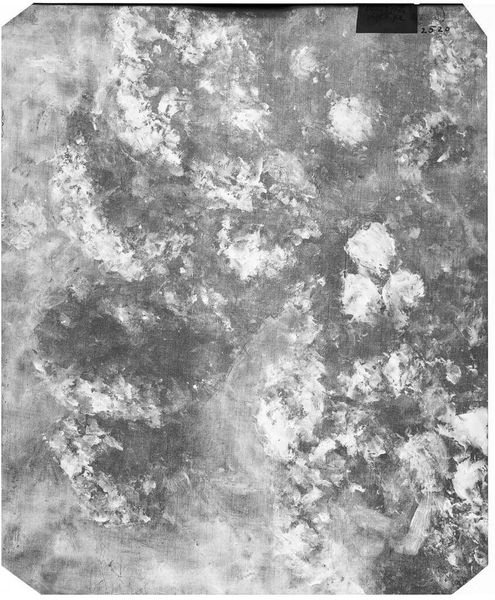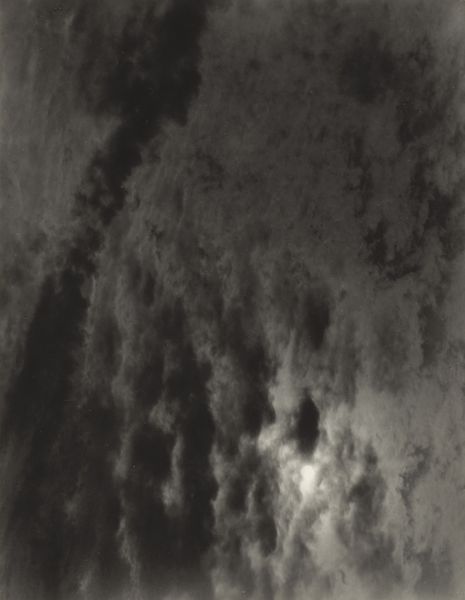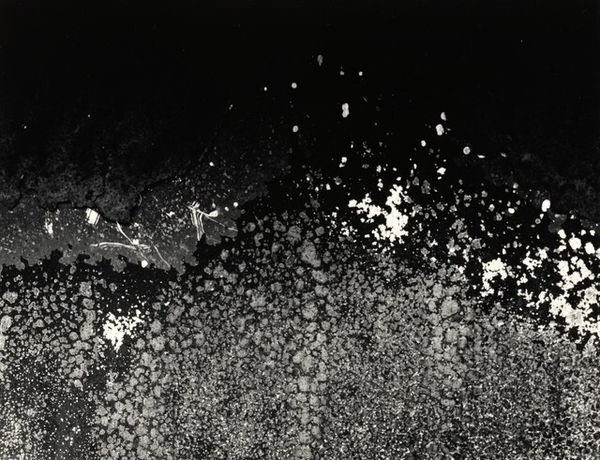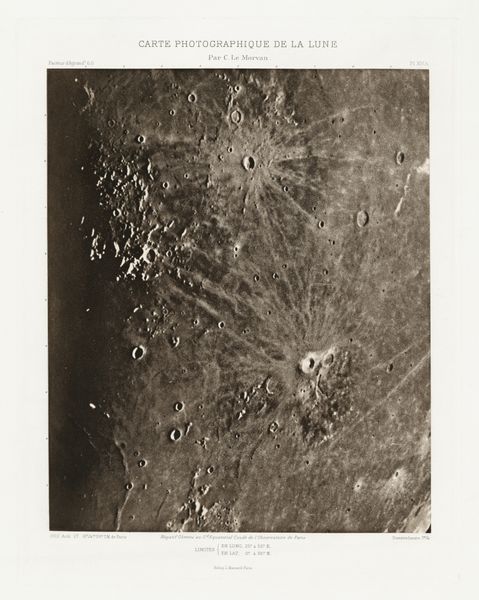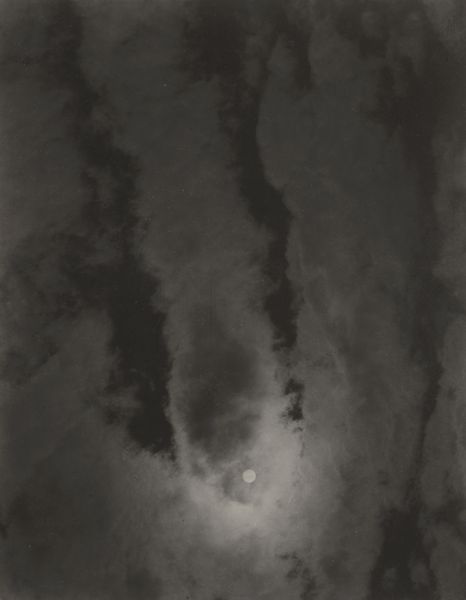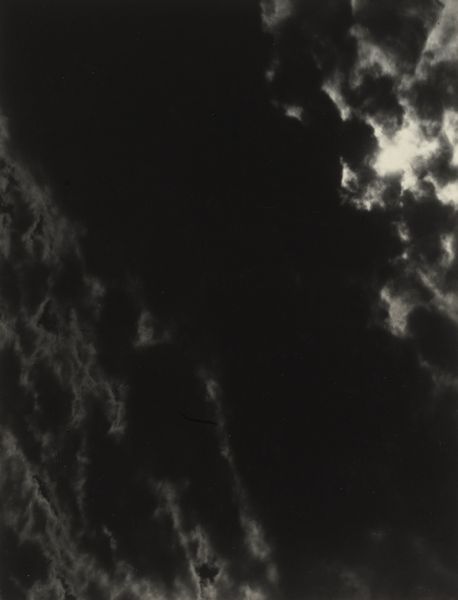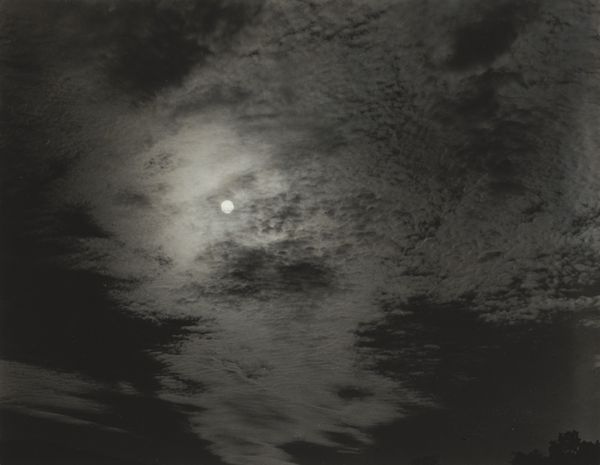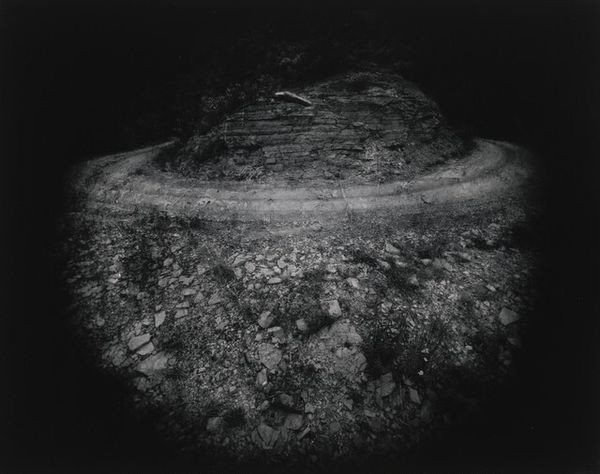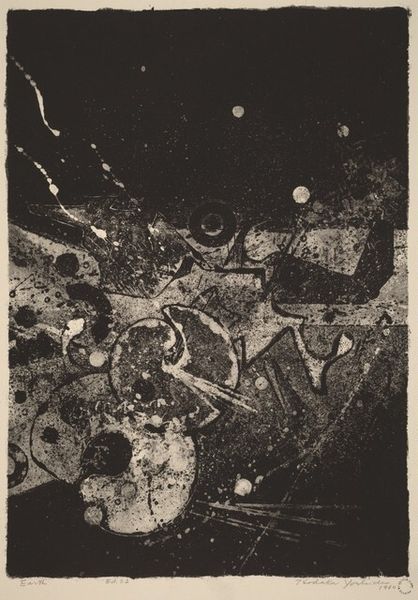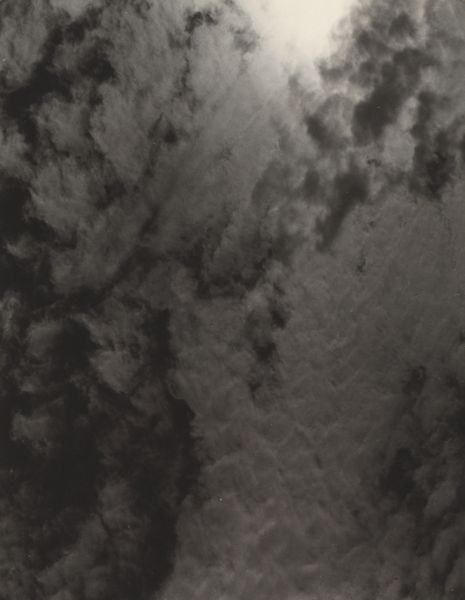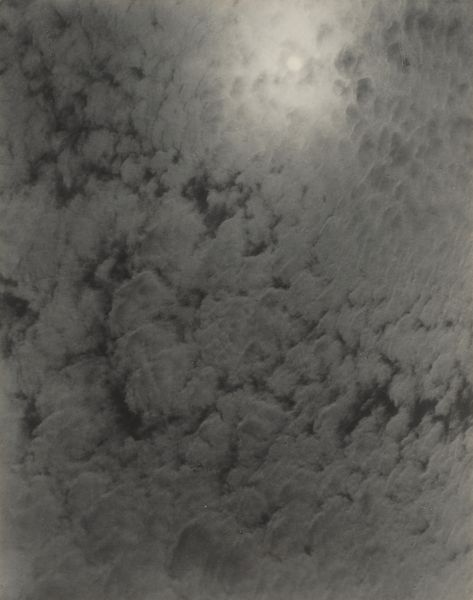
Dimensions: image: 9 1/16 x 6 3/4 in. (23 x 17.1 cm) support: 11 x 8.4 cm (4 5/16 x 3 5/16 in.)
Copyright: National Gallery of Art: CC0 1.0
Curator: This eerie photograph, titled "Untitled (Study of the Sun's Surface)", was taken in 1893 by Jules Cesar Janssen. It’s an unusual solarization print. What strikes you immediately? Editor: The sheer power of it. This isn't the sun we know, benevolent and life-giving. It looks turbulent, even violent, rendered in almost monochromatic shades. The granularity is incredible, like looking at the cosmic equivalent of roughspun cloth. Curator: Indeed. Solar photography was relatively new then. The sun, often a symbol of divine order and reason, here appears almost…chaotic. These dark sunspots were believed to portend disruption, not just physically, but perhaps socially, politically, or even personally. Do you see a parallel? Editor: Absolutely. Consider the historical context: The late 19th century was a period of intense industrialization, social upheaval, and new technologies reshaping everything. Representing the sun like this perhaps reflected a deeper anxiety about stability and the rapid transformation of society. The printing process itself feels appropriate for something depicting heat: a volatile material meeting another in an exploitative manner. Curator: I agree. The sun as a stable, eternal symbol gets upended. It reflects the uncertainty, a symbolic burn mark from a rapidly changing world. Its meaning goes from promising and reliable, to one of changeability and of destructive potential. Editor: And think about what it took to capture this image! Janssen would have needed specialized equipment, and to brave intense heat and light… the sheer audacity of trying to hold this cosmic force still, to dissect its surface! The process reflects human ambition and a constant push to understand. Curator: So well observed. In its strangeness, Janssen's solar study encapsulates both the wonder and the trepidation of a society grappling with change and new capabilities. Editor: Yes, a dark mirror held up to a world hurtling toward modernity, its anxieties imprinted on the surface of the sun itself.
Comments
No comments
Be the first to comment and join the conversation on the ultimate creative platform.
